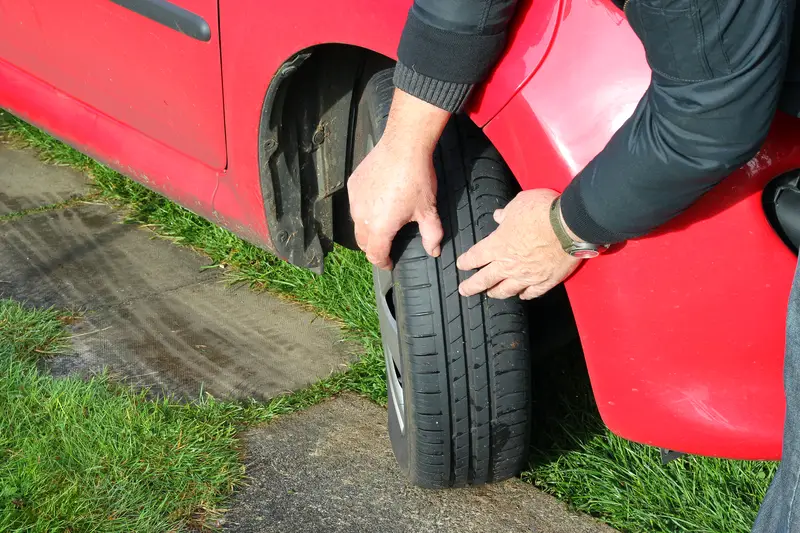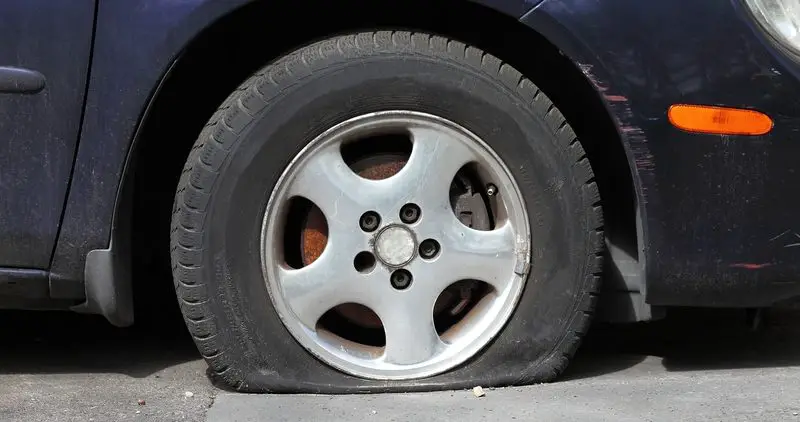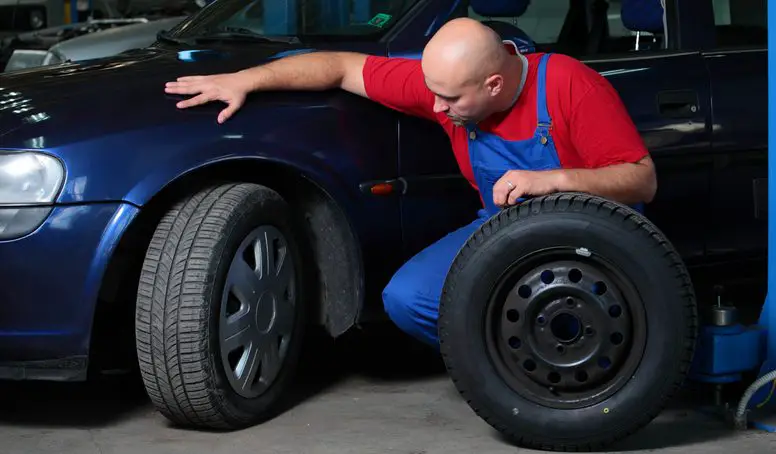
I remember when I spent an afternoon converting my mountain bike tires to tubeless. After finishing the somewhat stressful process, I found myself staring at my car, wondering whether or not the tires on my car were also tubeless. I mean, I just always assumed they were, but now I know.
Apart from a handful of specialty and industrial uses; most car tires since the 1960s have been tubeless. Tubeless tires handle better, are easier to repair, less vulnerable to punctures, and last longer. The initial challenges of tubeless included making impermeable rubbers and spokeless rims.
In the context of cycling, many riders still opt for tubed tires. However, it seems the vast majority of manufacturers use tubeless tires exclusively when it comes to cars. If you are like me, you can’t help but wonder why. Are tubeless tires really so much better?
Why Are Most Car Tires Tubeless?
There are many reasons why modern car tires are predominantly tubeless. However, we first need to understand that tubeless tires came about as a solution to some of the problems tubed tires faced.
How Tubed Tires Came About
There’s no doubt that rubber tires did, in fact, reinvent the wheel. Rubber compounds provided loads of grip and ridiculous amounts of comfort compared to the wagon wheels that preceded them.
The big challenge with rubber is that, unlike wood, it is obviously not rigid enough to carry the vehicle’s weight. The solution to this problem was to add air pressure between the rubber tire and the wheel rim.
A simple solution, really. All you need to do is add enough air between the rim and tire, and once the ideal pressure is reached, the rubber will be rigid enough to drive one. At the same time, the air would add a natural shock absorbed, comforting the ride.
However, the challenge was keeping the air inside the tire. Early rims were all spoked rims, which are similar to bicycle rims. Each spoke in a rim creates a hole where air could escape, and the tire would deflate.
Unfortunately, spoke holes weren’t actually the most significant challenge back then. Sure, someone could probably have figured out some way to seal those holes to an extent. But the real problem was in the actual rubber compounds used in tire designs.
You see, rubber is permeable, which means tiny structural cavities allow air to escape.
The solution to all these problems was basically to insert an impermeable balloon into the space between the rim and the tire. This balloon, or tube, held all the air trapped inside and created the pressure needed for the rubber to tire to function effectively.
The Failure Of Tubed Tires

Now that challenge of keeping the air inside the tire was resolved, cars dressed in rubbed tires rolled off the showroom floors and quickly went on to revolutionize the world.
But, as cars became faster and more roads were being traveled, the shortfall of the balloon tube became inescapable.
For one, tubed tires had to be run on higher pressures. If pressures dropped, the warp in the tire would run the risk of ripping the tire from the rim or leading to the rim punching holes in the tubes. This higher pressure isn’t always conducive to better handling, especially on looser terrain.
The second and arguably most volatile problem was related to the fact that the tube was, in essence, a balloon. And when you expose a balloon under pressure to a needle, the results tend to favor the needle.
In other words, getting a puncture with tubed tire results in a very abrupt release of the pressurized air.
As car wheels modernized away from spokes, getting a puncture became more dangerous.
Modern rims had far fewer leakage points, which meant there wasn’t always enough room for such a quick release of pressure to escape. This resulted in the air making its own way by blowing a hole in the tire.
Imagine a puncture that played out like an explosion. It just doesn’t sound like a whole lot of fun to me.
The Introduction Of Tubeless Tires
By the mid-20th century, manufacturers realized that tubes were both the solution and the problem. They resolved the challenge of trapping pressurized air inside a wheel, but with that pressure created a whole new array of problems.
The solution presented itself in the form of a grade-school physics lesson. Sort of.
If we understand that the inner tube is basically a balloon, then we have the option to prevent violent popping.
For example, if you apply a piece of tape to a balloon and poke a needle through it, the balloon will not pop. Instead, it incurs what modern motorists call a “slow puncture.”
In order to incorporate this principle into tires, an impermeable material (like an inner tube) was bonded with the inside of a rubber tire. Now the tire was the tape on the balloon. They were one.
On the inside, car rims underwent some redesigns that added grooves to prevent leakage, so the rim formed part of the new ‘tube.’
With these basic principles, BF Goodrich patented the first tubeless tire in 1952, and the world was never the same.
The Benefits Of Tubeless Tires

The main advantages to tubeless tires are the following:
- Durability
- Slow rate of deflation (enough time to stop at the nearest repair centre)
- More fuel efficient (tubeless tires are lighter)
- More stable, safe and comfortable driving
- Less punctures
- Easier to repair
Where tubed tires fell short, tubeless tires immediately picked up the slack. Firstly, tubeless tires don’t have to be run at such excruciatingly high pressures to keep the tire on the rim.
These lower pressures allow for better handling and more comfortable driving, and better thermal expansion.
The ability to run at lower pressures means that more of the tire is coming into contact with the ground, allowing for better grip in slippery conditions. This has been a crucial safety factor because cars have gradually become lighter and faster.
Secondly, tubeless tires don’t deflate as violently as tubed tires. In fact, these days, you can even add silicon-based compounds inside your tires, which will fill small punctures as you drive.
Thirdly, because the tire’s contact area is spread out more evenly, the tires also wear more evenly, which vastly increases the lifespan of tires.
Finally, tubeless tires are far easier to repair if you have a bad puncture. Remember that tubes often cause tires to fail and explode, which is not exactly an easy fix.
Conclusion
Finding a car on the road that still uses tubed tires is extremely rare. This is because tubed tires have to be run at higher pressures, which decreases surface contact and handling.
They also had a tendency to burst when they got a puncture. Tubeless tires, on the other hand, can self-seal small punctures and offer much better handling.
